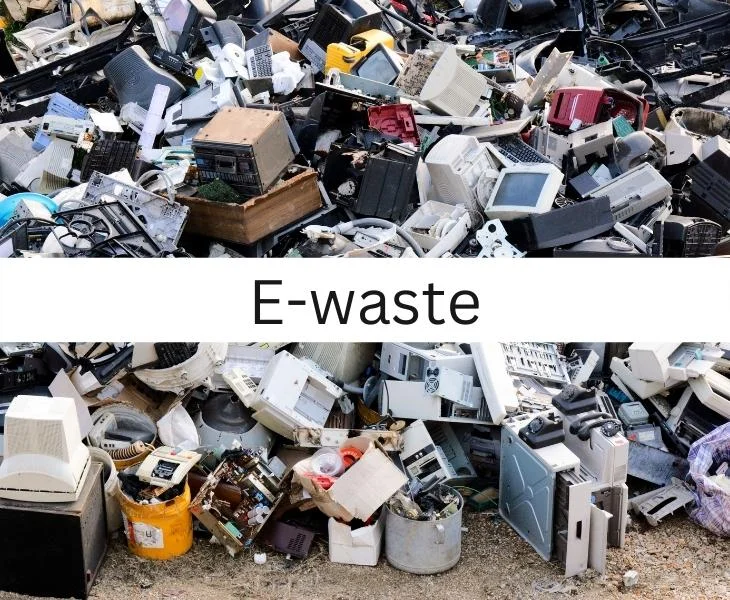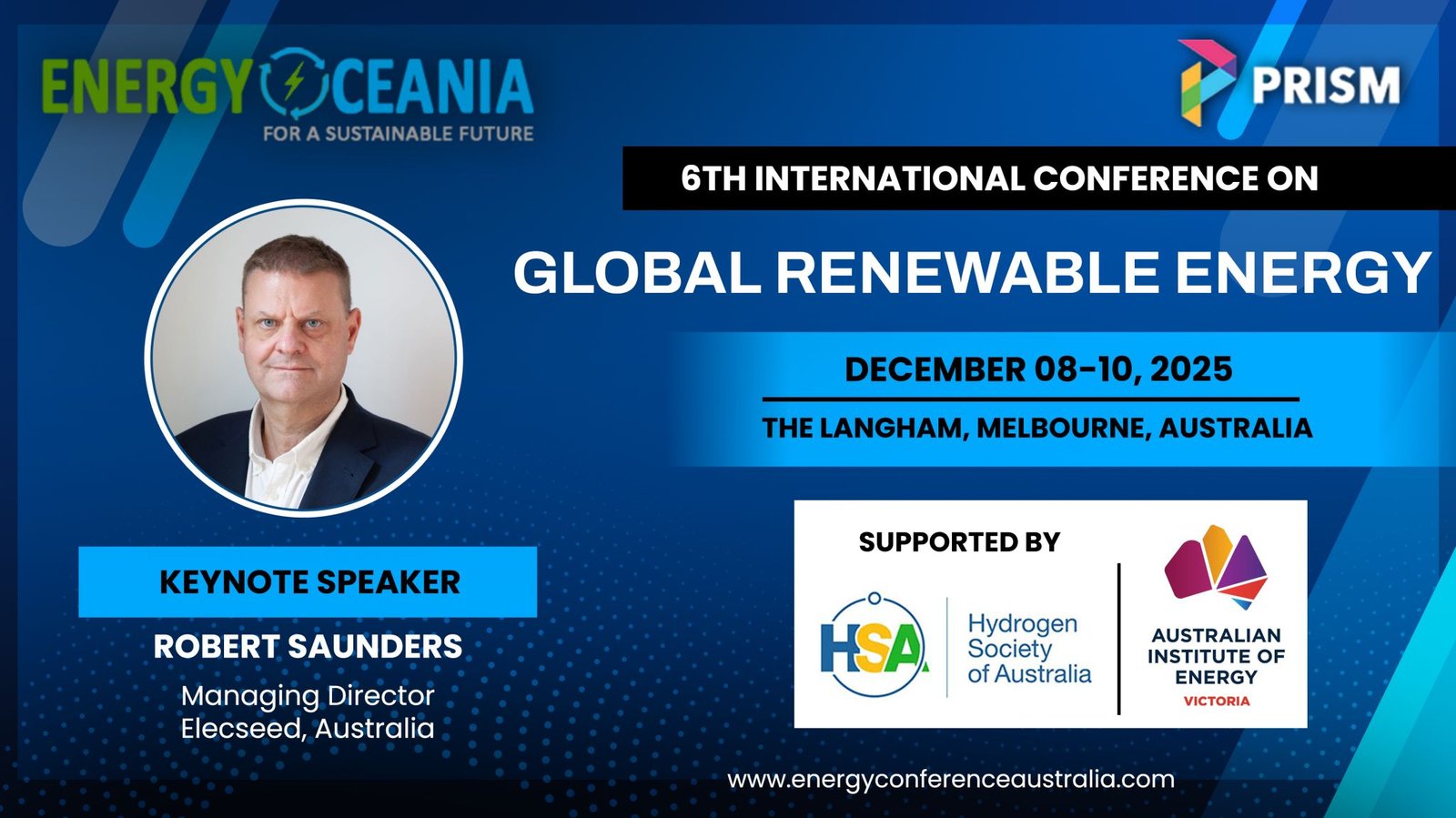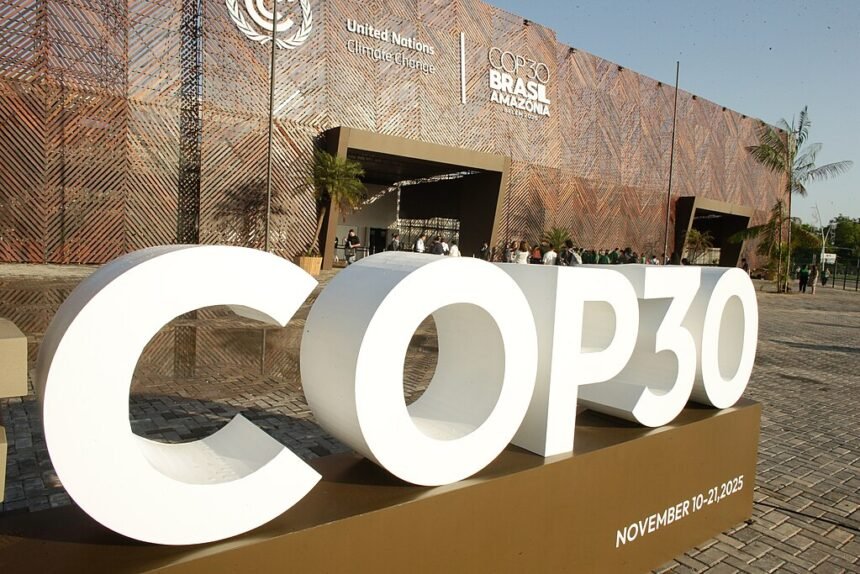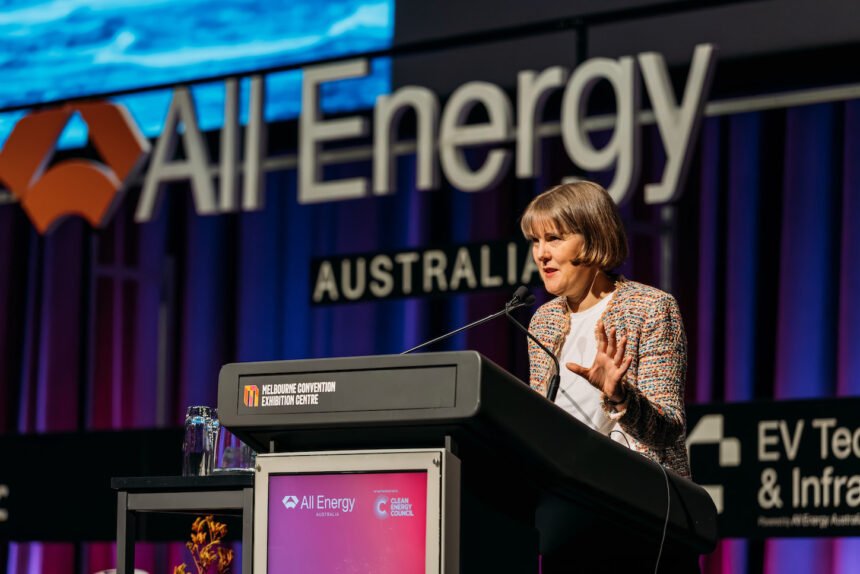With 62 million metric tons generated across the world in 2022, the volume of discarded electronic material has nearly doubled since 2010.
According to earth.org, if e-waste ends up in a landfill, “the surrounding soil can become contaminated with toxic substances such as mercury, cadmium, beryllium and lead. These chemicals enter the soil, waterways and air, leading to polluted environments and negatively impacting human and marine life.”
National and international actions are essential to protect communities from dangerous e-waste recycling activities, adopting and enforcing high-level international agreements.
E-waste or Electronic pollution is a growing environmental issue as the rapid advancement of technology has led to a significant increase in the production of various electronic devices. Pollution is the presence of harmful substances in the environment that causes an adverse effect and as a result, degrades the quality of the environment. Improper disposal of E-waste can lead to harmful effects on Human health and the overall environment.
Types of Pollution
- Air Pollution: Air pollution is caused due to the emission of toxic and harmful substances into the air that adversely affects human health and the environment.
- Water Pollution: Water Pollution occurs when harmful chemicals, waste, and sewage water are sent directly into the water bodies that adversely affect the aquatic living and living beings consuming that polluted water.
- Noise Pollution: Noise Pollution occurs when unwanted and louder noise is created by the activities such as industrial processes, and transposition construction and causes harm to the physical and mental health of all living beings.
- Soil Pollution: Soil Pollution occurs when heavy metals, chemicals, and pesticides are mixed up in the soil and degrade the quality of the soil.
- E-Waste Pollution: E-waste pollution occurs when electronic devices that are discarded or not in use are dumped which as a result harms the natural environment.
TAIWAN: Taiwan is a world leader at ecycling rate reached a new high of 85.87 percent – when it comes to recycling the electronic devices and household appliances that its citizens throw away each year. Last year, according to the Environmental Protection Administration’s (EPA) Web site, the WEEE (waste electrical and electronic equipment, or e-waste).

Taiwan’s 4-in-1 Recycling Program, manufacturers and importers of six types of electrical and electronic goods are obliged to pay into a recycling fund supervised by the EPA. That money is then distributed to incentivize proper recycling.
The six categories are IT equipment (such as laptops, motherboards, keyboards, monitors, and printers), TVs, refrigerators, washing machines, air-conditioning units and fans. Mobile phones aren’t included.
VIETNAM: Research from the Institute of Environmental Science and Technology shows Vietnam generates around 100,000 tonnes of electronic waste yearly, with estimates suggesting it could reach 250,000 tonnes by 2025. With domestic electronic waste rising and estimates predicting a further increase, the country braces for a mounting environmental challenge. Around 68 licensed companies tasked with handling these discarded gadgets, are mostly small-scale operations, processing a mere 0.25 – 30 tonnes per day.
According to a recent ABC reporting article, workers, many of them migrants from across Vietnam, repair or salvage items working 11 hours a day for a monthly salary of around $712.90 ($US470) like laptops, scarred mobile phones, camera lenses, television remotes, and even entire air conditioning units, which is approximately two and a half times the minimum wage in HCMC Vietnam. Waste workers fan out to people’s homes and collect waste that can be salvaged from bins at street corners, which include copper, gold, silver and even some tiny amounts of rare earth minerals necessary for smartphones, computer displays and LED light bulbs, which are recovered from recycling.
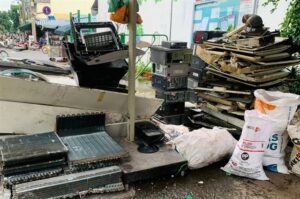
Electronic wasteextraction on Lý Nam Đế Street, District 11, HCM City.
CHINA: In 2024 China is ranked number one in the world for E-Waste at 10,129 kilotons, and the world leader in making electronics.
China has set an ambitious goal to recycle half of its electronic waste by 2025, in particular, due to new research finding that they are expected to have up to 6 billion used mobile phones by that date. At the same time, the Chinese government hopes to properly recycle 50 percent of electronic waste by 2025 and include 20 percent of recycled content in new products. This creates huge opportunities for the circular economy.
The formal recycling process currently operates at just 40% efficiency, according to a 2021 study, leaving a considerable portion of e-waste still managed informally, which has exacerbated environmental harm and health hazards.
The China Circular Electronics and Material Value Chains project, an initiative by the Platform for Accelerating the Circular Economy (PACE) section of the World Economic Forum, is a prime example of initiative aiming to embed recycled materials into electronic products and devices. Through collaboration between multinational corporations, the Chinese government, and the domestic material recovery sector, this project seeks to trial new regulatory strategies, technologies, and partnerships.
Since 2009, the Chinese government has continuously issued a series of laws and regulations and established a preliminary e-waste management system based on extended producer responsibility (EPR) principles, so as to protect the environment and improve resource utilization.
AUSTRALIA: In 2019, only 17.4% of e-waste was formally collected and recycled – the other 80% or so is often illegally incinerated or dumped in landfill. When 90% to 95% of e-waste components can be recycled, it means the average Australian produced 21.7 kg of e-waste, compared with the global average of 7 kg. By 2030 the national total is projected to rise by nearly 30%, to 657,000 tonnes. (DCCEEW)
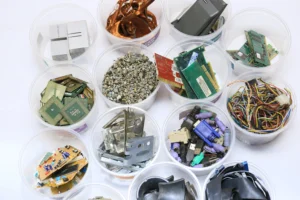
Image: Vilmar Simion, unsplashed
INDIA: India produces 3,230 kilotons of E-waste only 1% is recycled. (GeekforGeeks) In places like Mustafabad (northeastern outskirts of Delhi), around 90% of collected e-waste is processed informally. According to Statista, informal disposal methods extract valuable metals (iron, steel, copper, aluminum, gold, silver, platinum) but also release toxic materials (lead, mercury, cadmium) into the environment. India established a recycling target of 60% for electrical and electronic waste for the financial year 2024. This target will increase by 10% every two years, aiming for an 80% e-waste recycling rate by financial year 2029.
JAPAN: Japan 2,569 kilotons and recycles 22%. Japan is harvesting junk electronics amid resource shortages. A new “urban mining” campaign aims to extract valuable metals from used smart phones, televisions and computers. The goal is to reduce Japan’s dependence on foreign suppliers and shaky supply chains.
Japan has implemented strict laws governing e-waste management. The Act on Promotion of Recycling of Small Waste Electrical and Electronic Equipment (known as the “Home Appliance Recycling Law”) is a cornerstone of Japan’s e-waste regulations.
Producer Responsibility:
-
- Manufacturers and importers are responsible for collecting and recycling e-waste.
- They must establish collection systems and ensure proper disposal of end-of-life electronics.

A Panasonic worker in Japan recycles electronic waste
Consumer Participation through awareness campaigns and penalties. Plus, Japanese society is generally collectivistic, whereby people often view themselves and others as members of a collective unit or group – opposite to a Western indivualistic society.
-
-
- Japanese consumers actively participate in e-waste recycling.
- Collection centers, drop-off points, and awareness campaigns encourage responsible disposal.
-

